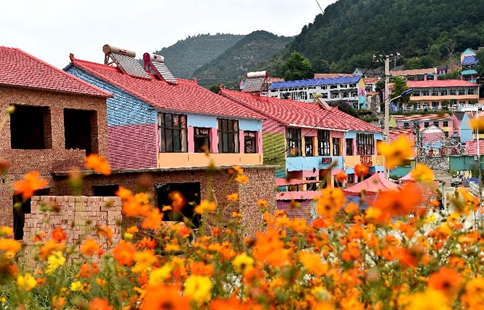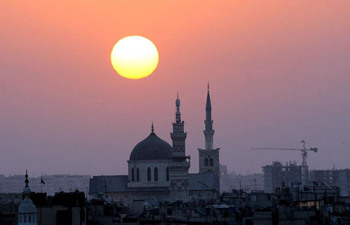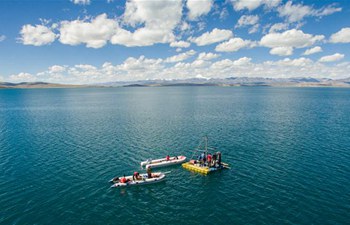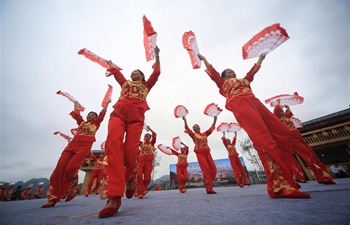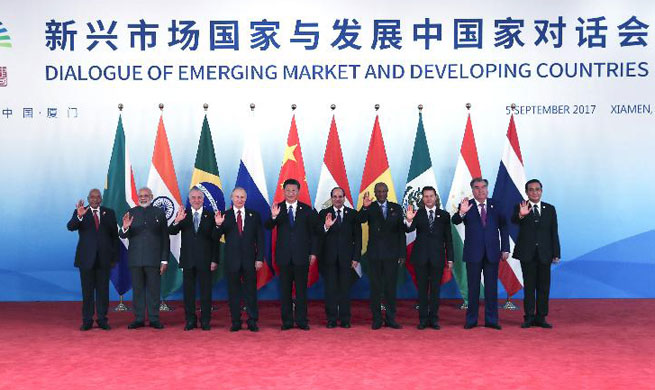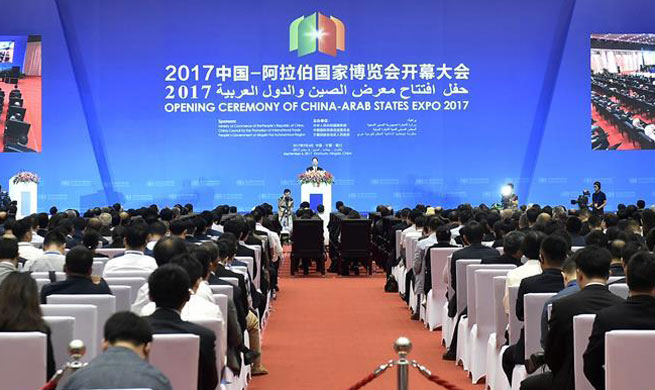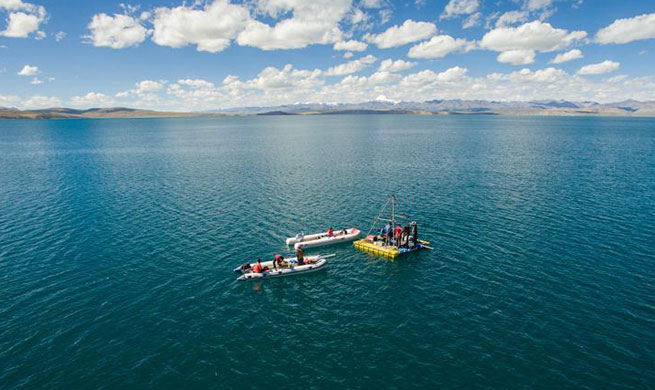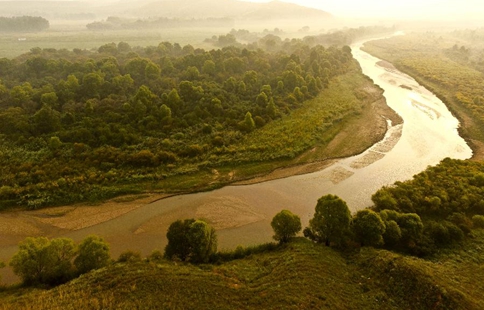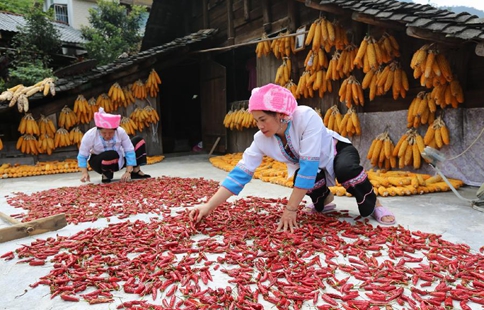ADDIS ABABA, Sept. 6 (Xinhua) -- Ethiopia, east Africa's largest economy and most populous at 100 million people, is pursuing an ambitious industrialization development strategy.
One of the main parts of Ethiopia's industrialization drive is the textile and garment sector, which the government hopes will substantially boost export revenue while creating mass employment opportunities for Ethiopians.
Ethiopia's aim to earn 1 billion U.S. dollars from textile and garment production in several years' time may seem too ambitious, given the sector's revenue of only 89.3 million dollars in the fiscal year that ended on July 8, industry players are optimistic on the way forward.
The country is working on several fronts to increase revenue from the sector, said Bantiyhun Gesesse, corporate communications director at Ethiopia Textile Industry Development Institute.
INDUSTRIAL PARKS ARE THE FUTURE
While Ethiopia's export targets have failed on several benchmarks, industry insiders say the textile and garment sector is still on an optimistic trajectory.
Fasil Tadesse, president of Ethiopian Textile and Garment Manufacturing Association, said the handicap the sector faces can be solved with the provision of industrial zones.
"The proliferation of industrial parks overseen by Ethiopian Prime Minister Hailemariam Desalegn and Ethiopian Industrial Park Corporation Board Chairperson Arkebe Oqubay shows government commitment to textile and garment sector," he said.
Several industrial parks have been built and commissioned across Ethiopia, including the Hawassa, Kombolcha and Mekelle industrial parks.
Hawassa Industrial Park was constructed at a cost of 246 million dollars, while Mekelle and Kombolcha Industrial Parks cost 100 million and 90 million dollars respectively.
All three industrial parks were constructed by China Civil Engineering Construction Company.
"We need a leadership that's vigilant, vibrant and with full experience that can lead with knowledge in these industrial parks if they're to fulfill Ethiopia's textile and garment sector aspirations," Tadesse said.
CHINA IS ETHIOPIA'S NEWEST TEXTILE AND GARMENT EXPORT DESTINATION
While the textile and garment sector currently employs a small proportion of the millions of Ethiopians, Tadesse said it's not too early to dream big.
Tadesse said his optimism comes partly from changes in the world's most populous nation, China, which used to supply 60 percent of the world's textile and garments until recently.
"China's 1.4 billion people are transitioning into a high-tech economy, becoming possibly a net buyer in five years' time," he said, adding that the Chinese market could be bigger than Western Europe, North America and Australia combined.
Tadesse acknowledged that Ethiopia will face fierce competition from the likes of Vietnam, Sri Lanka, and Bangladesh.
"The Textile and garment sector is a low-cost industry which by its nature is migratory, so Ethiopia's cheap electricity at three U.S. cents per kwh, and abundant, affordable trainable manpower should give the country the edge," he said.
A PROMISING FUTURE FOR INDUSTRIES
Tadesse and Gesesse's optimism about the future of Ethiopia's textile and garment sector is shared by Mohammed Hassen, general manager of Al-Mehdi Group of Industries.
Hassen said his firm, which established its knitwear, textile and garment factory in 2007, in Dukem city, 37 km south of Addis Ababa, hopes to benefit from Ethiopia's preferential access to U.S. and European markets.
The factory exports soccer uniforms, basketball uniforms, shirts, trousers and shorts, with 40 percent of the textile products and 100 percent of garment products sold to foreign markets.
Despite challenges such as inadequate infrastructure and logistics, which has been exacerbated by Ethiopia being landlocked, Hassen is optimistic about his firm's prospects.
"We hope the expected commissioning of the Chinese-built 4.2 billion U.S. dollar, 756 km Addis-Djibouti rail line will reduce our transportation cost by half, helping add to our expansion plans," he said.
"As skilled labor increases and Ethiopia's textile and garment sector expands, I'm sure Ethiopia will soon be known as a center of fashion garments," Hassen added.




